
Efficiency on the packaging line isn’t optional. With tight margins, strict safety requirements, and increasing consumer demand, even small slowdowns on the packaging line can add up to big costs. One of the most common and often overlooked bottlenecks happens before packaging even begins: separating containers like trays, cups, or clamshells.
Many manufacturers rely on employees to manually unstack and feed containers onto the line. While it seems simple enough, manual denesting slows production, introduces errors, and increases labor costs.
That’s when automation can be extremely helpful. A tray denester may not be the flashiest piece of equipment in your facility, but it can completely transform your packaging process.
What Is a Denester?
A denester machine is designed to automatically separate and feed nested containers, like trays, cups, clamshells, or tubs, onto a conveyor or directly into the filling system. Think of it as the “set-up crew” for your packaging line. Instead of requiring workers to pull containers apart one by one, the tray denester keeps a steady flow of packaging ready for the next stage of production.
You’ll typically find denesters at the front end of food packaging lines, preparing containers for filling, sealing, or labeling. They’re especially valuable in industries that package items in plastic trays, single-serve cups, or disposable clamshells. These packages are common in ready-to-eat meals, baked goods, dairy products, and produce.
For example, a company packaging fresh-cut fruit in plastic cups can’t afford slowdowns when demand peaks in the summer. A tray denester ensures every food packaging container is consistently ready to go, keeping the line moving smoothly without added labor.
Why Denesting Matters More Than You Think
Without a denester machine, manual separation becomes a drag on productivity. Employees tasked with pulling apart tightly nested containers struggle to keep pace with automated filling or sealing equipment. This results in inconsistent line speeds, wasted product, and higher labor costs that add up over time.

The Risk of Errors
Manual denesting is also prone to errors. Misaligned or damaged food packaging containers can jam equipment or compromise product presentation. In food manufacturing, compliance and hygiene standards are non-negotiable. Which means mistakes like these can slow production even further, or worse, impact food safety. Even minor slowdowns at this stage can have a ripple effect, causing backups, downtime, and missed deadlines.
Automation Removes the Uncertainty
By automating this repetitive task, tray denesters remove the uncertainty. They ensure every container is separated, positioned correctly, and ready for the next step. This smooths production flow and helps maintain the integrity and cleanliness of food packaging containers.
Take a bakery producing pre-packaged muffins, for instance. If trays aren’t denested consistently, they risk damage during loading and may require costly rework. With a tray denester in place, each tray is reliably presented, helping the bakery hit daily production targets while maintaining quality.
4 Ways Denesters Boost Your Packaging Line
When manufacturers evaluate automation, it’s easy to focus on the big equipment, like fillers, cappers, or sealers, because they’re directly tied to product output. But denesters quietly play a critical role in keeping those larger systems running at peak performance.
By ensuring trays, cups, or clamshells are ready and positioned correctly, denesters set the tone for the rest of the packaging line. Their impact stretches far beyond container separation, influencing speed, quality, labor efficiency, and long-term scalability.

Here are a few ways denesters can impact your line:
- Efficiency and Speed: Denester machines feed food packaging containers continuously. It helps keep pace with automated lines and prevents costly slowdowns. With consistent throughput, production schedules stay on track, avoiding the domino effect of bottlenecks across the line.
- Consistency and Accuracy: Denesters separate and place each container exactly the same way, every time. That precision eliminates the risk of crooked trays, jammed cups, or misfed clamshells, small issues that can lead to wasted product or downtime if left unchecked.
- Labor Savings: Instead of dedicating staff to repetitive, low-value tasks, automation frees employees to focus on higher-priority areas like quality control, equipment management, or even cross-training. This reduces labor costs and helps manufacturers better utilize their workforce.
- Scalability: As demand grows, denesters can handle higher volumes without requiring more hands on deck. They support increased production capacity without sacrificing accuracy and quality, making them a long-term investment that grows with your business.
Denesters help improve the entire packaging process. For manufacturers looking to cut costs, boost reliability, and prepare for growth, tray denesters deliver measurable results in multiple areas of the operation.
The Long-Term Payoff of Denesters
While the upfront cost of a tray denester may give some manufacturers pause, the long-term return on investment makes it worth considering. Labor savings alone add up quickly, especially as wages rise and hiring continues to be challenging. By reducing downtime and minimizing container waste, denesters also prevent hidden costs that quietly cut into margins and profitability.
Improved product presentation is another form of ROI that’s easy to overlook. Food packaging containers that are consistently aligned and undamaged look better on store shelves, which builds consumer trust, enhances brand perception, and increases the likelihood of repeat purchases. Over time, that consistent quality strengthens your reputation and reduces the risk of returns or complaints.
When you factor in higher throughput, fewer errors, and the ability to scale without expanding your workforce, denesters prove their value far beyond the initial purchase price. For many manufacturers, the payback period can be surprisingly short, with savings and efficiency gains continuing to compound year after year.
Make Denesters Part of Your Automation Strategy
Denester machines are the hidden heroes of food packaging. They may not get the same spotlight as fillers or cappers, but without them, even the most advanced packaging line can stumble. By automating the simple task of separating and feeding food packaging containers, denesters deliver efficiency, accuracy, and savings that impact across every stage of production.
If you’re evaluating automation upgrades, don’t overlook the power of a tray denester. It could be the key to unlocking smoother production, stronger ROI, and a more resilient operation ready to meet rising demand.
Download our free Food Manufacturer’s Guide to Food & Beverage Labeling Equipment to explore more automation solutions that streamline packaging and drive profitability.
.webp?width=200&height=114&name=2x-Packleader-logo-large%20(1).webp)

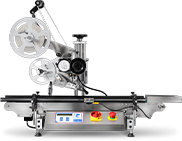
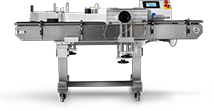

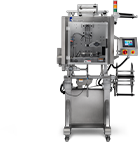
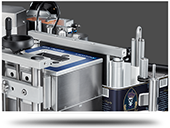

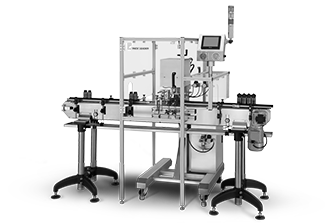






.webp?width=360&name=2x-color-logo%20(1).webp)